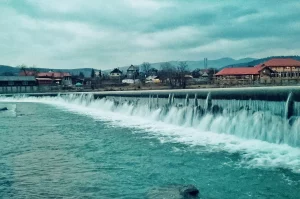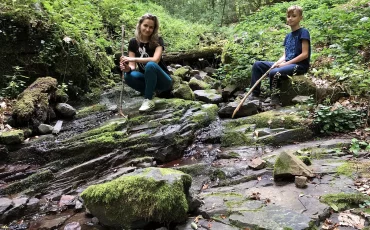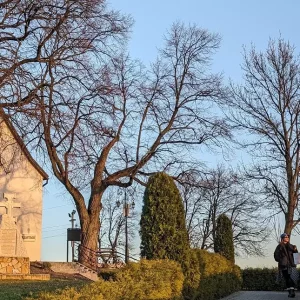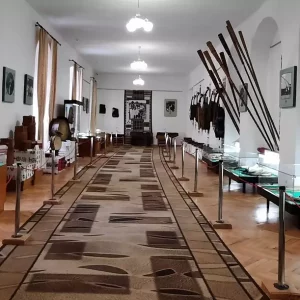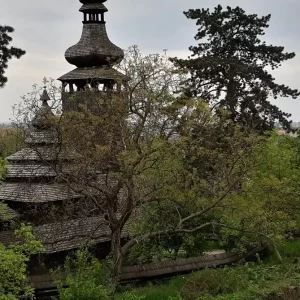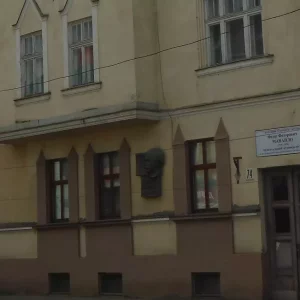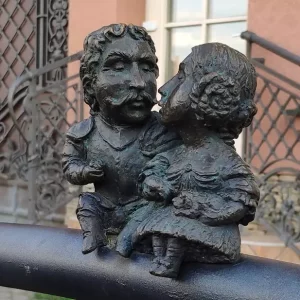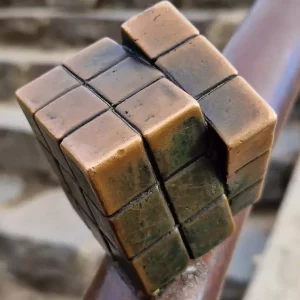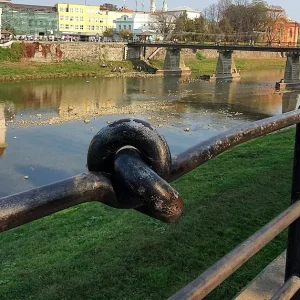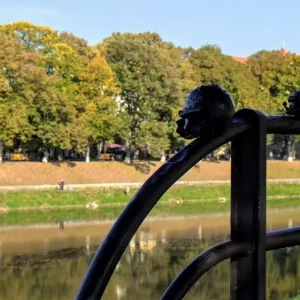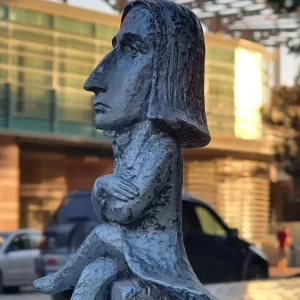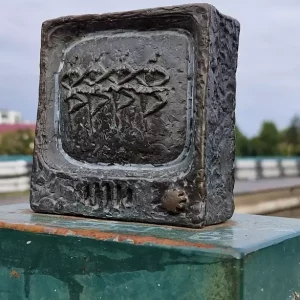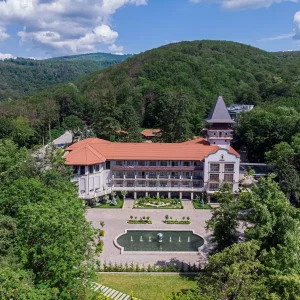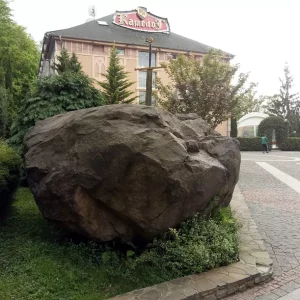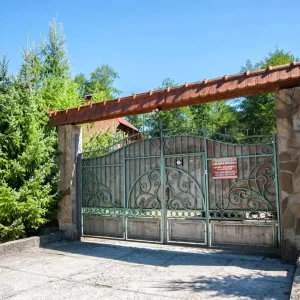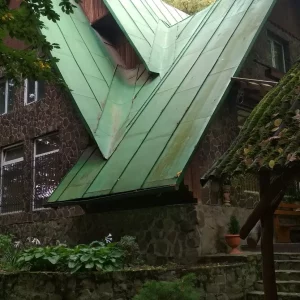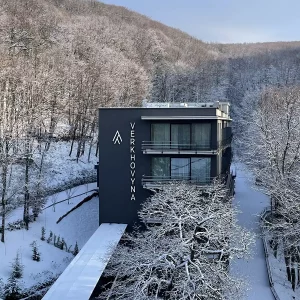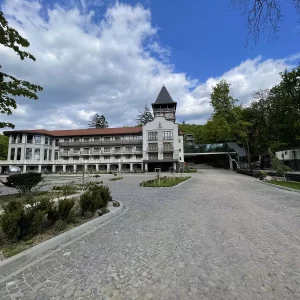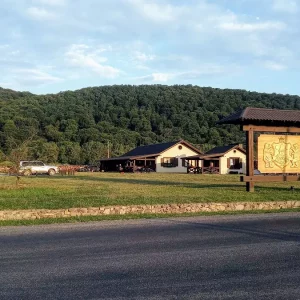Archaeological research proves that people lived in Nevytske as early as the 8th and 6th centuries BC. In any case, the village itself was founded before the famous Nevytsky Castle appeared in the 12th century. And it was from the name of the village that the castle became known as Nevytskyi. The name of the village most likely comes from the ancient Slavic deity Nava or Neva, which symbolised the unknown. This is also where the word ‘daughter-in-law’ (someone who does not know her future) comes from. According to another version, the name Nevytske comes from the Proto-Slavic word “nevi”, which means new. Another legendary hypothesis derives the name of the village from the word “daughter-in-law”, explaining that young “brides” from all over Uzhgorod district were hidden in the castle during enemy attacks.
You can learn more about the history of Nevytskyi Castle at the following link.
As for the history of the village itself, it was owned by the Druget dynasty for the longest time, as well as the castle. It was a part of the Druget family’s Nevitsky domain from 1328 to the end of the 17th century. In 1644, during the religious wars between Protestants and Catholics, the Transylvanian prince György Rákóczi 𐌠𐌠 captured and destroyed the Nevytsky Castle. Since then, the fortress has not been rebuilt and has remained a ruin. After the Kurucs’ uprising in 1703-1711, Nevytske was extremely devastated. In 1715, only 8 families lived here. However, after the catastrophic events, the village began a rapid revival. Already in 1751, a wooden church was mentioned here, which has not survived to this day. In 1777, a brick church of the Intercession of the Holy Virgin was built in the village. Although the inscription at the entrance to the church states that the church was built in 1779, locals claim that it happened 2 years earlier. Despite the turbulent historical events, the shrine has been preserved to this day.
Interest in the ruins of Nevytsky Castle increased significantly in the late 19th century. At that time, everything medieval and romantic became extremely fashionable in Europe. Nevytske was not spared from these trends.
Wealthy families from Vienna, Budapest, Prague, and Bratislava began to come to the picturesque grounds next to the castle. There is a legend that the famous science fiction writer Jules Verne even visited Nevytsky Castle in 1892. It was this voyage that allegedly inspired him to write the novel “A Castle in the Carpathians”.
The popularity of this place was the reason for its arrangement. In 1879, a beautiful park was set up next to the ruins of Nevytsky Castle for the comfort of holidaymakers and a magnificent fountain with natural water pressure was built. This place was called the Wagner Garden Park. And this is not due to the famous German composer, but to the outstanding Hungarian forestry scientist Karl Wagner (1830-1879). He was the head of the forestry department at that time and supervised the repair work in the castle and the arrangement of the surrounding area. At that time, the area near the ruins of Nevytsky Castle was ennobled with a large number of seedlings of various trees, including Weymouth pines, larch, North American Douglas fir, berry yew and others. In addition, an entire linden alley was planted, and an observation deck was built on the territory of the fortress.
During the First World War, the park suffered significant damage from the actions of a regiment of Austro-Hungarian soldiers who were stationed here in 1914-1915.
In the 1920s and 1930s, thanks to the efforts of the Czechoslovak government, Nevytske turned into a tourist centre. To this end, restoration and renovation work was carried out on the ruins of the Nevytske Castle. In particular, the wooden roof frame on the castle’s observation tower was restored. In 1923, the castle was recognised as a historical property. In addition, in 1934, a dam was built in Nevytske to divert part of the water from the Uzh River to the 10-kilometre-long Nevytske-Uzhhorod derivation channel, where two mini-hydroelectric power plants were built. The river itself near Nevytske has become a convenient place for swimming and beach holidays. The dam itself is now known locally as the Nevytske Waterfall.
In 1939, Nevytskyi Castle played its defensive role for the last time in its history. It was in this year that Czech soldiers held the defence here for about 4 hours, holding back the advance of the superior forces of the Hungarian Khortist army. As a result of active hostilities, the castle suffered significant damage.
In Soviet times, the Transcarpathian International Youth Camp Verkhovyna was built on the territory of Nevytske on a mountain near the castle in 1962. This place became a popular holiday destination for young people from all over the world. Poets, writers, artists, and musicians loved to come here for inspiration. In 1972, the world-famous cellist Mstislav Rostropovich gave a concert in Nevytske.
During its 45-year history, the Verkhovyna camp has hosted 580,000 tourists, of whom about 150,000 were foreigners. Nowadays, the camp is abandoned and neglected. It resembles a hobbit town after the apocalypse.
However, the development of the tourist infrastructure of Nevytske and the surrounding area continues to this day. The Camelot hotel and recreation complex, built in 2007 in the neighbouring village of Kamianytsia, is a popular destination for holidaymakers, where football clubs like to relax and train at the hotel’s sports centre, and a premium-class resort opened in 2021 in the village of Kamianytsia near the castle “Verkhovyna Resort Medical & Wellness”.
